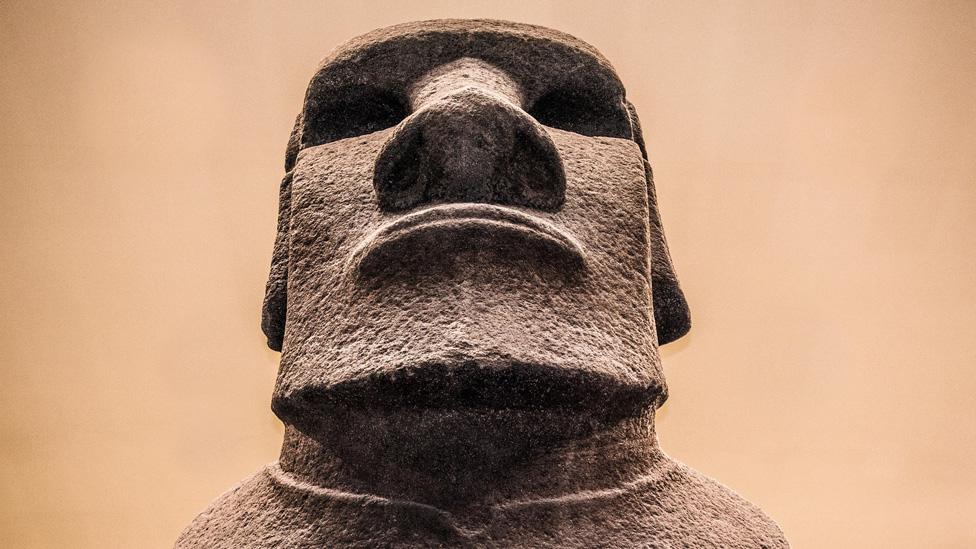Easter Island statue uncovered in dried-up lake
- Published
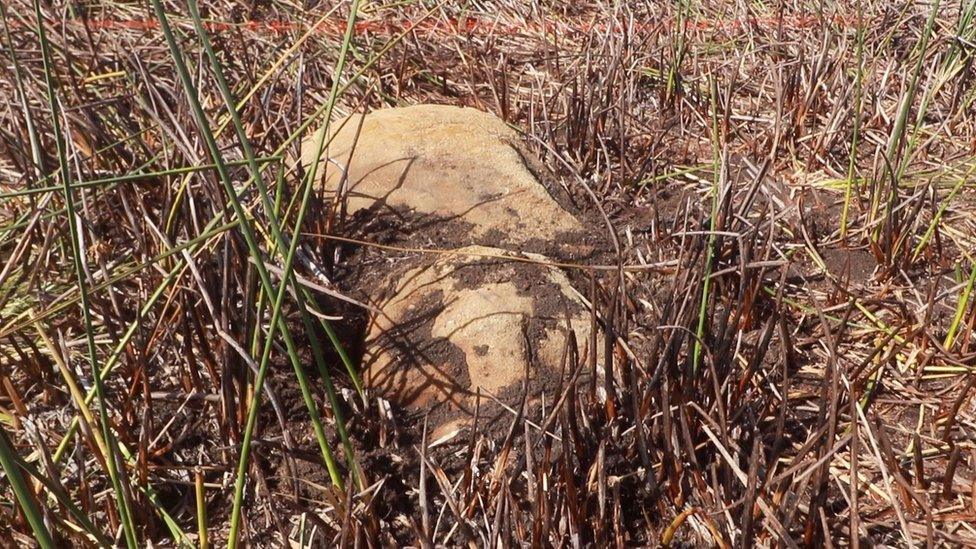
The moai was found lying on its side in what was once an underwater volcanic crater lake.
Researchers on Easter Island have found a previously undiscovered moai - one of the Pacific island's distinctive stone statues.
It was found in a dried-out lake bed around the Rano Raraku volcano, where several of the statues were damaged by fire last year.
Scientists believe more of them could be buried nearby.
The moai were created by the Rapa Nui people - the island's ancestral inhabitants who came from Polynesia.
They are monolithic stone figures, normally made out of a kind of volcanic ash, that have elongated faces and are thought to have been built more than 500 years ago.
"This is the first time, from what I understand, that something has been found in the basin," archaeologist José Miguel Ramírez said, according to Reuters.
The lake bed has only been accessible recently after it began drying up in 2018.
Mr Ramírez said that it was possible the Rapa Nui had tried to move the statue during a previous time when the lake was dry.
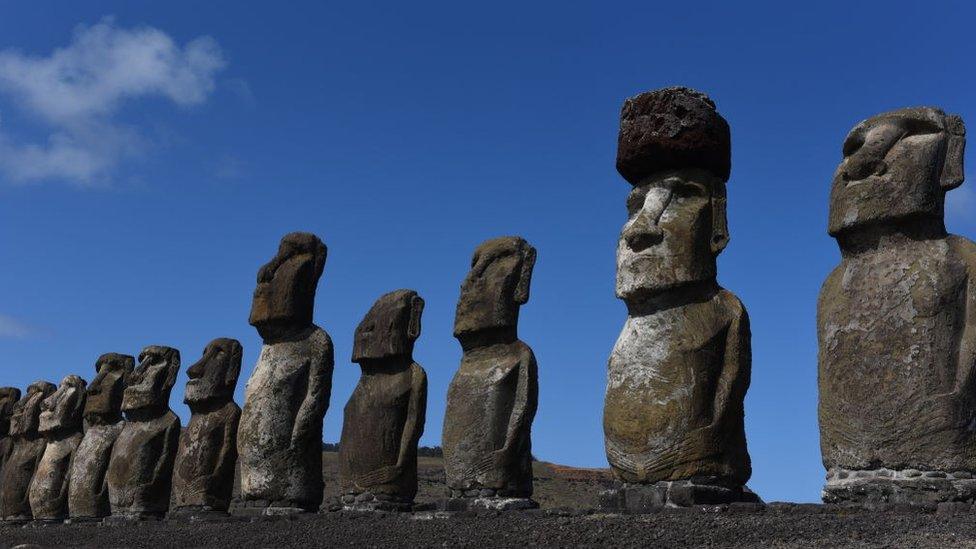
There are hundreds of moai on Easter Island
Ninoska Avareipua Huki Cuadros, the director of the Ma'u Henua indigenous community that looks after the site, told AFP that the lake had been three metres (9.8ft) deep for the past 200 to 300 years - meaning nobody could have moved it in that time.
The moai was found by a team of volunteers from three Chilean universities, who were working on a project to restore the marshland in the crater of the volcano.
The area had been affected by a forest fire that broke out in October - charring some of the statues.
The uncovered moai is 1.6m (5.2ft) tall, making it smaller than the hundreds of similar statues on the island. It was found lying on its side in the middle of the lake bed.
It has been described as "full-bodied with recognizable features but no clear definition", by the Ma'u Henua.
"What we've seen today is very important, because this is part of the history of the Rapa Nui people," said Salvador Atan, another Ma'u Henua leader.
The moai are figures of spiritual devotion for the Rapa Nui, embodying the spirit of a prominent ancestor. Each one was considered to be the person's living incarnation.
Easter Island, which is also known as Rapa Nui, is a protected national park and Unesco heritage site that was annexed by Chile in the late 19th Century.
Related topics
- Published7 October 2022
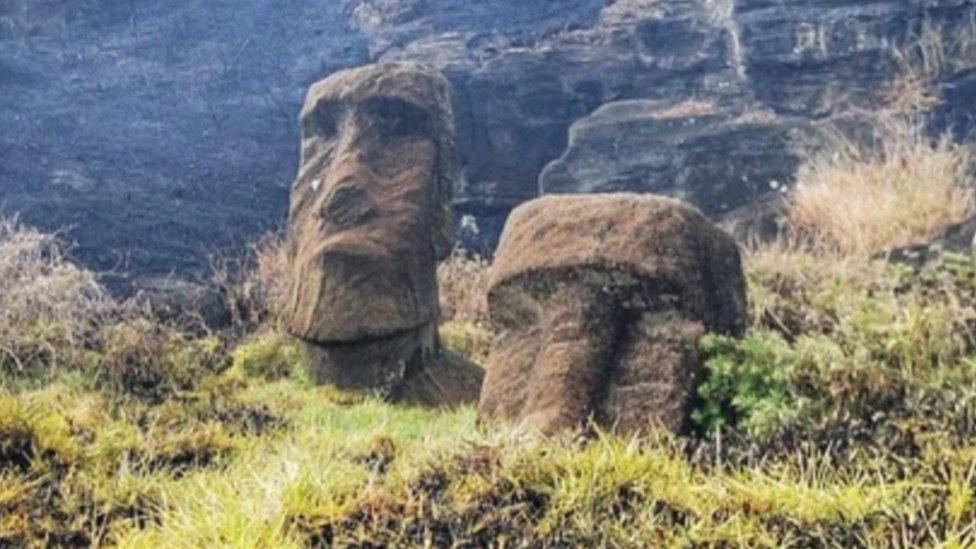
- Published5 March 2020
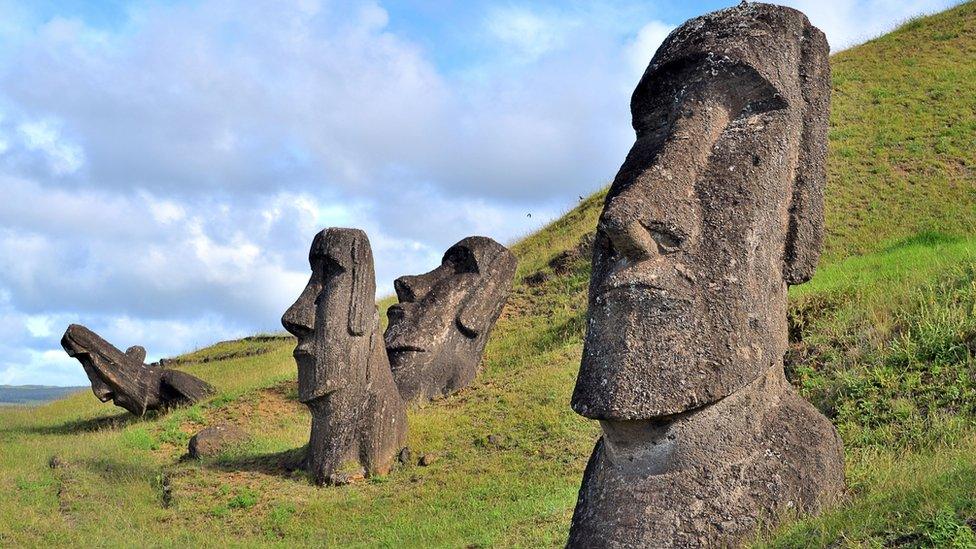
- Published18 November 2018
